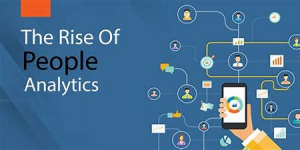 People Analytics is about using a data-driven approach to inform your people practices, programs and processes. Analytical techniques, ranging from reporting and metrics to predictive analytics to experimental research can help you uncover new insights, solve people problems and direct your HR actions. People analytics can help you to understand how knowledge of social and data sciences can help you make more informed, objective people decisions. The mindset shift that needs to occur is moving from a reporting of lag measures, like employee turnover, to a reporting on lead measures, like employee engagement or satisfaction and eventually to forecasting to being able to predict turnover down to the individual level.
People Analytics is about using a data-driven approach to inform your people practices, programs and processes. Analytical techniques, ranging from reporting and metrics to predictive analytics to experimental research can help you uncover new insights, solve people problems and direct your HR actions. People analytics can help you to understand how knowledge of social and data sciences can help you make more informed, objective people decisions. The mindset shift that needs to occur is moving from a reporting of lag measures, like employee turnover, to a reporting on lead measures, like employee engagement or satisfaction and eventually to forecasting to being able to predict turnover down to the individual level.
In a recent Deloitte survey on the topic, they found a mature analytics approach is not possible without data accuracy, security and consistency. Things that many organizations struggle with. Therefore, your first step has to be to define which data you want to use, ensure that the data is as clean as possible and decide how you will capture that data. The top drivers of people analytics maturity were:
- Mature organizations are 2x more likely to have a data council responsible for data governance.
- Mature organizations are 3x more likely to have strong partnerships with business units and corporate functions.
- Mature organizations are 3x more likely to have an organizational culture of data-driven decision-making.
The problem is not just “having the data” but “knowing how to use it” and understanding how to explain it, visualize it, and put it into action in front of a business leader. HR leaders and their teams are expected to be knowledgeable enough in the use of statistics to be able to understand the data, determine the trends and make well thought out recommendations to improve the business.
Here is a great example of a trend that HR can be on the forefront of and lead the business!